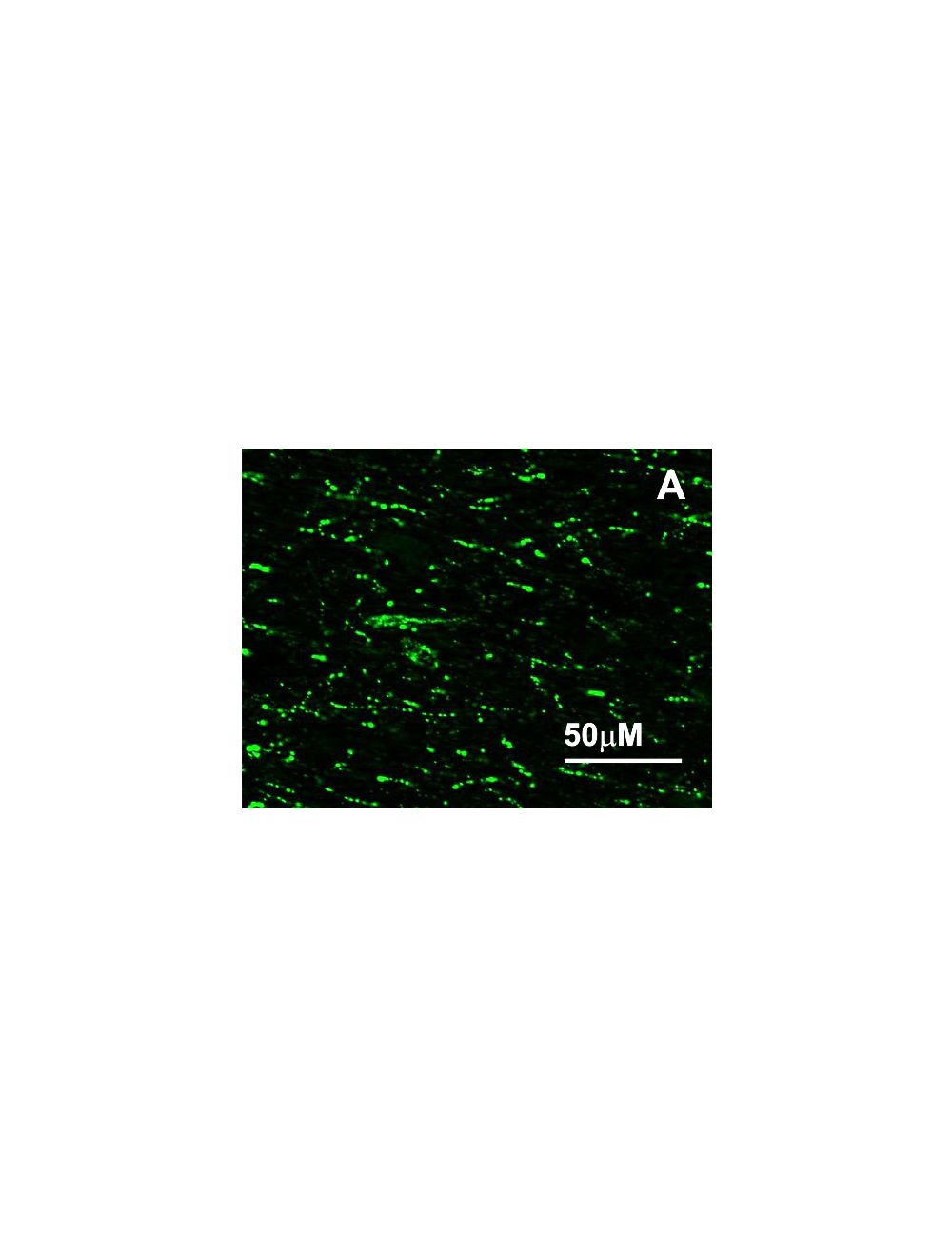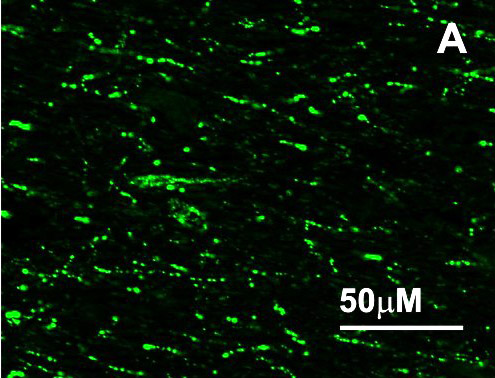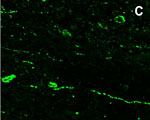Neuropeptide RFRP-3, Guinea pig Polyclonal Antibody
- Product Name Neuropeptide RFRP-3, Guinea pig Polyclonal Antibody
-
Product Description
Guinea Pig anti-Neuropeptide RFRP-3 Polyclonal Antibody (Unconjugated), suitable for IHC-Frozen.
- Alternative Names Neuropeptide NPVF; RFRP; Neuropeptide VF; C7orf9; FMRFamide-related peptides;
- Application(s) IHC-Frozen
- Antibody Host Guinea Pig
- Antibody Type Polyclonal
- Specificity Specificity was demonstrated by immunohistochemistry. This antibody is known to react with rat and sheep.
- Species Reactivity Human, Rat, Sheep
- Immunogen Description A synthetic peptide (VPNLPQRF) corresponding to the amino acids 124-131 from human Neuropeptide VF. Neuropeptide VF is the precursor of the neuropeptides NPSF (RFRP-1), RFRP-2 and RFRP-3. The synthetic peptide was conjugated to a carrier protein KLH to enhance the immunological response.
- Conjugate Unconjugated
- Purity Description Neat serum
- Regulatory Status For research use only.
Product Info
-
Product Description
Guinea Pig anti-Neuropeptide RFRP-3 Polyclonal Antibody (Unconjugated), suitable for IHC-Frozen.
- Application(s) IHC-Frozen
- Application Details Immunohistochemistry (IHC). A concentration of 1 in 2000 is recommended. IHC performed in sheep brain (hypothalamus) demonstrates intense staining of cells and terminals. Biosensis recommends optimal dilutions/concentrations should be determined by the end user.
- Target Neuropeptide RFRP-3
- Specificity Specificity was demonstrated by immunohistochemistry. This antibody is known to react with rat and sheep.
- Target Host Species Human
- Species Reactivity Human, Rat, Sheep
- Antibody Host Guinea Pig
- Antibody Type Polyclonal
- Antibody Isotype Mixed
- Conjugate Unconjugated
- Immunogen Description A synthetic peptide (VPNLPQRF) corresponding to the amino acids 124-131 from human Neuropeptide VF. Neuropeptide VF is the precursor of the neuropeptides NPSF (RFRP-1), RFRP-2 and RFRP-3. The synthetic peptide was conjugated to a carrier protein KLH to enhance the immunological response.
- Purity Description Neat serum
- Format Lyophilized
- Reconstitution Instructions Spin vial briefly before opening. Reconstitute in 50 µL sterile-filtered, ultrapure water. Centrifuge to remove any insoluble material.
- Storage Instructions Store lyophilized antibody at 2-8ºC or lower. After reconstitution, divide into aliquots and store at -20°C, or lower, for optimal long term stability. It is recommended that a reconstituted aliquot is stored at 2-8°C for no longer than 2 weeks. Allocation of an appropriate anti-bacterial agent can increase shelf life by several weeks. Glycerol (1:1) can be added to neat serum for additional stability if intended use does not prevent this.
- Batch Number Please see item label.
-
Expiration Date
12 months after date of receipt (lyophilized, unopened vial).
- Alternative Names Neuropeptide NPVF; RFRP; Neuropeptide VF; C7orf9; FMRFamide-related peptides;
- Uniprot Number Q9HCQ7
- Uniprot Number/Name Q9HCQ7 (NPVF_HUMAN)
- Scientific Background Neuropeptide VF is the precursor of neuropeptides NPSF (RFRP-1), RFRP-2 and RFRP-3 (NPVF). RFRP-3 is reported to inhibit forskolin-induced production of cAMP. RFRP-3 has also been shown to block morphine-induced analgesia.
- Shipping Temperature 25°C (ambient)
- UNSPSC CODE 41116161
- Regulatory Status For research use only.

 1800 605-5127
1800 605-5127 +61 (0)8 8352 7711
+61 (0)8 8352 7711





